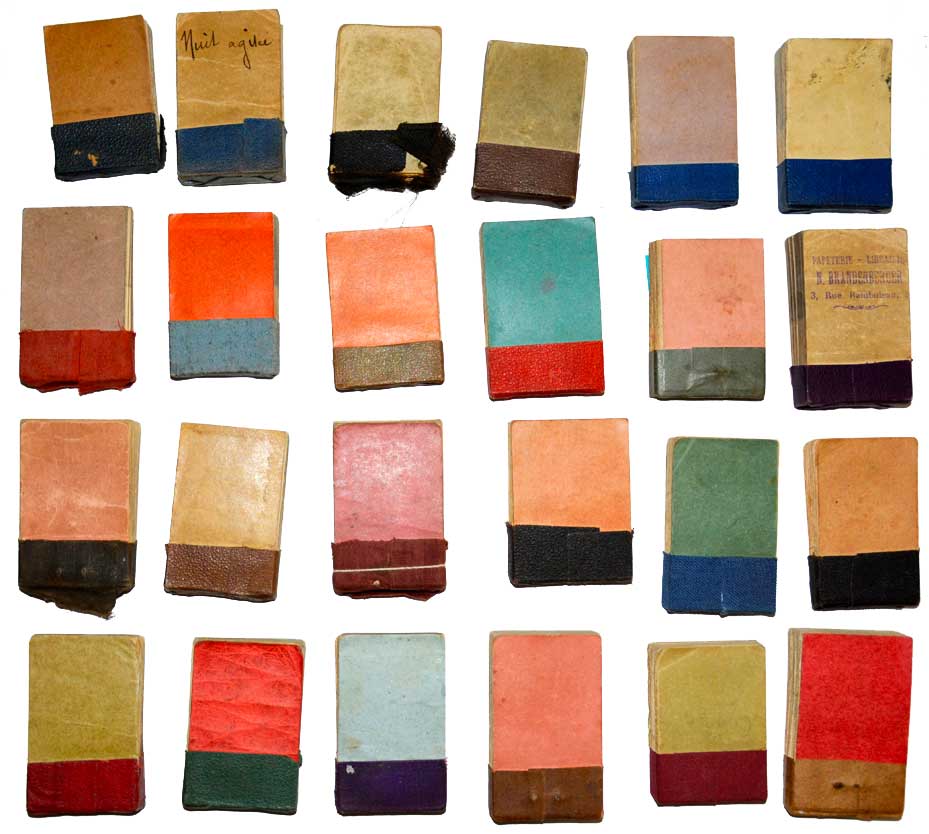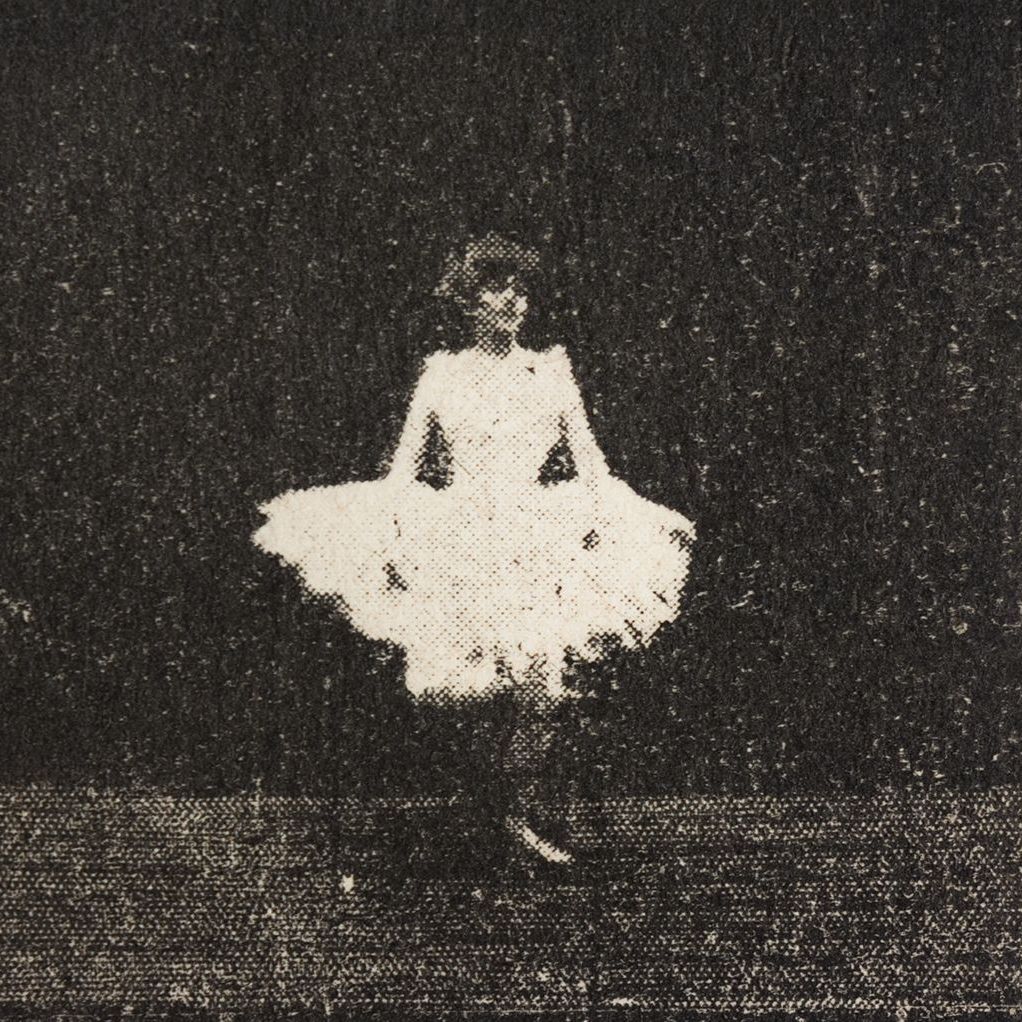LÉON BEAULIEU’S POCKET CINEMATOGRAPH: LOST FILMS DISCOVERED IN FIN-DE-SIÈCLE FLIPBOOKS
Programme curated by Thierry Lecointe & Robert Byrne
From peep shows to GIFs, moving images have proliferated as novelties inside and outside the movie theater since the invention of motion picture photography. In America, the most well-known of the early inventions is the Mutoscope, a single-viewer wooden cabinet that created the illusion of movement with the crank of a handle. But it was the simple and portable flipbook that put this illusion in the palm of the hand, more than a century before the smartphone came along.
The earliest flipbooks pre-date motion pictures by nearly thirty years. Books derived from motion pictures came hand-in-hand with the advent of projected films, and examples were produced in the United States, England, Germany, Spain, and France as early as 1896. In France, the Lumières developed the Kinora, a viewer that cycled through bound images made from their films, while the Gaumont company used the traditional booklet form. However, recent research into Parisian manufacturer Léon Beaulieu has yielded some astonishing revelations.
Frenchman Léon Beaulieu manufactured his first flipbooks in late 1896, with his most productive period occurring from late 1897 to early 1898. On 9 March 1898 he registered a patent for a “mechanical stripper,” a simple device for browsing what he called “pocket cinematographs.” Over its brief years of operation (1896–1901), his business was fairly itinerant (to say the least). Addresses printed on his flipbooks and confirmed in Parisian business directories name five different business locations in as many years. The last address, 257 rue Saint-Denis in Paris, was the location on 22 February 1901, at the time of his death at the age of 43.
Only bare traces of documentation exist to provide what little is known of Beaulieu’s life. He had brown hair, gray eyes, and stood just over 5 feet tall, but physical characteristics aside, his truculent personality stands out as his most defining feature. His 1880 induction papers for military service at age 20 indicate that he had already lost both parents. He could read and write, but had only attained a primary level of education. While in the military, he was imprisoned for two years for “insults and threats to a superior outside the service,” and was denied a certificate of good conduct when he entered the reserves in 1885. He later served another two months for assault, followed by two years in prison for fraud, and then two more months for another assault. In August 1896, the army discharged him because of asthma and obesity. The final entry in his penal record shows that on 29 January 1901, just weeks before his death, he was fined a hundred francs for an unspecified morals misdemeanor.
Independent researcher Thierry Lecointe first came across Beaulieu and his flipbooks in July 2013. A German collector had launched a crowdsourcing project hoping to identify an incomplete flipbook that he thought might depict Georges Méliès’s 1896 film, The Arrival of a Train at Vincennes Station. Though no conclusions were drawn at the time, Lecointe took up the hunt with the conviction that the book’s images provided sufficient evidence (such as the inscription on the engine, locomotive and carriage markings, and the angle of the shadows) to accurately identify the station and the producer of the original film. This was no simple matter, because in France between 1896 and 1898 at least 18 movie titles with arriving trains were produced, shot in 16 different stations, by 10 different filmmakers. Ultimately, Lecointe reached the conclusion that this train arrived in Joinville-le-Pont station, and the flipbook was very likely derived from frames of Georges Méliès’s Arrival of a Train at Joinville (Méliès catalogue no. 35), which was the only train arrival film shot at Joinville-le-Pont. Lecointe then came to the tantalizing realization that there could be others out there. His search led him to the French collector and historian Pascal Fouché, whose collection of more than 10,000 flipbooks (catalogued at flipbook.info) includes a corpus of 24 flipbooks manufactured by Beaulieu, which, based on exhaustive research, we now consider to be complete.
Of the 24 Beaulieu books in Fouché’s collection, one is sourced from Edison’s well-known May Irwin Kiss (1896), but others originate from films no longer thought to exist. All the other books in the collection appropriate images from motion picture films produced 1896–1897 by Méliès and Gaumont. Through a meticulous comparison of décor and other compositional elements in extant films, Lecointe definitively attributed seven fragments from the films of Georges Méliès and 13 others that possibly originate from Méliès films but cannot be identified with absolute certainty.
While most flipbook producers standardized their offerings to a particular format, Beaulieu published his books in a variety of dimensions and in lengths that ranged from 32 to 121 pages. By disassembling one of the books, Lecointe determined how Beaulieu manufactured his. He printed images side by side using a halftone photoengraving technique (similar to newspaper photography printing), on a single sheet of paper, or matrix, like a “signature” in book publishing: 11×11 would yield 121 images/pages; 7×12, 84 pages; 9×10, 90 pages; and so on. The sheet would then be cut into individual pages and bound into small finished flipbooks of varying sizes.
Since October 2017, Lecointe and moving image restorer Robert Byrne have collaborated with Pascal Fouché to reanimate these delicate treasures. Working with Byrne, photographer Onno Petersen devised an innovative mount which allowed each flipbook page to be photographed without risk to the pages or their fragile binding. In the final tally, some 2,346 photograms have been photographed, allowing glimpses of some of the very earliest motion pictures to complete their long journey back to the movie screen.
Thierry Lecointe, Robert Byrne (adapted from an article originally published in the catalogue of the 2019 San Francisco Silent Film Festival)
Titles and annotations None of the flipbooks have a printed title. Some have a handwritten title on the flipbook cover; these are listed in capital letters as their main title. Those with no handwritten title have been assigned descriptive titles; these assigned titles are in square brackets. Actual film titles have been included for those flipbooks whose corresponding motion picture titles have been positively identified.
The annotation “Ex cat” indicates that the authors believe that the film is correctly attributed, but they cannot find a corresponding entry in the Méliès filmography or catalogue.
Length and speed The measurement “frames” indicates the number of pages (images) in the flipbooks. The projection frame rate “fps” (frames per second) refers to the number of pages (images) filmed per second. This could be different from the original film frame rate.
Source: San Francisco Silent Film Festival.
NUIT AGITÉE (121 fotogrammi/frames, 12 fps): attribuito con certezza a/positively attributed to Méliès, forse la prima versione di/possible first version of Star-Film cat. no. 26 (1896), Une Nuit Terrible.
LA DANSE (121 fotogrammi/frames, 12 fps): dubitativamente attribuito a/tentatively attributed to Méliès, Star-Film cat. no. 45 (1896), Miss de Vère(Gigue Anglaise). Non risultano conservate copie su pellicola/No film copies known to survive.
ARRIVÉE DU TRAIN (121 fotogrammi/frames, 6 fps): attribuito a/attributed to Méliès, Star-Film cat. no. 35 (1896), Arrivée d’un train (Gare de Joinville). Non risultano conservate copie su pellicola/No film copies known to survive.
[PRESTIDIGITATEUR] (121 fotogrammi/frames, 12 fps): dubitativamente attribuito a/tentatively attributed to Méliès, Star-Film cat. no. 101 (1897), David Devant. Non risultano conservate copie su pellicola/No film copies known to survive.
[BOXEURS] (121 fotogrammi/frames, 12 fps): dubitativamente attribuito a/tentatively attributed to Méliès, possible first version of Star-Film cat. no. 136 (1898), Match de boxe, professeurs de l’école de Joinville. Non risultano conservate copie su pellicola/No film copies known to survive.
LE DUEL (121 fotogrammi/frames, 12 fps): dubitativamente attribuito a/tentatively attributed to Méliès, forse la prima versione di/possible first version of Star-Film cat. no. 148 (1898), Assaut d’escrime, école de Joinville. Non risultano conservate copie su pellicola/No film copies known to survive.
LE BÂTON (121 fotogrammi/frames, 12 fps): dubitativamente attribuito a/tentatively attributed to Méliès. Ex-cat.
[COMBAT AU SABRE] (121 fotogrammi/frames, 12 fps): dubitativamente attribuito a/tentatively attributed to Méliès. Ex-cat.
[BAGARRE DE MITRONS] (121 fotogrammi/frames, 12 fps): dubitativamente attribuito a/tentatively attributed to Méliès. Ex-cat.
LE COUCHER DE LA MARIÉE (LE DÉSHABILLÉ DE LA MARIÉE / LA TOILETTE DE LA MARIÉE) (90 fotogrammi/frames, 8 fps): attribuito a/ attributed to Méliès, forse la orima versione di/possible first version of Star-Film cat. no. 177/178 (1898), Le Coucher de la mariée. Non risultano conservate copie su pellicola/No film copies known to survive.
L’AMANT SURPRIS (90 fotogrammi/frames, 8 fps): attribuito a/attributed to Méliès. Ex-cat.
POSE CHEZ L’ARTISTE. VÉNUS (90 fotogrammi/frames, 8 fps): attribuito a/attributed to Méliès. Ex-cat.
LA PUCE (90 fotogrammi/frames, 10 fps): attribuito a/attributed to Méliès. Ex-cat.
LA MÉPRISE (90 fotogrammi/frames, 8 fps): attribuito a/attributed to Méliès. Ex-cat.
LE COUP DU PÈRE FRANÇOIS (90 fotogrammi/frames, 8 fps): dubitativamente attribuito a/tentatively attributed to Méliès. Ex-cat.
LA NOURRICE (90 fotogrammi/frames, 10 fps): dubitativamente attribuito a/tentatively attributed to Méliès. Ex-cat.
LOÏE FULLER (90 fotogrammi/frames, 10 fps): attribuito a/attributed to Méliès o/or Gaumont, Star-Film cat. no. 44 (1896), Danse serpentine, o/or Gaumont cat. no. 12 (1896), Danse serpentine: Loïe Fuller. Non risultano conservate copie su pellicola/No film copies known to survive.
DÉGUISEMENT (88 fotogrammi/frames, 12 fps): attribuito a/attributed to Méliès, Star-Film cat. no. 42 (1896), Dix chapeaux en 60 secondes. Non risultano conservate copie su pellicola/No film copies known to survive.
LE BAIN (80 fotogrammi/frames, 8 fps): attribuito a/attributed to Méliès, forse la prima versione di/possible first version of Star-Film cat. no. 128 (1897), Après le bal (le tub). Non risultano conservate copie su pellicola/No film copies known to survive.
[VOYEUR REGARDANT UNE FEMME DERRIÈRE UN MUR] (80 fotogrammi/frames, 8 fps): attribuito con certezza a/positively attributed to Méliès. Ex-cat.
LA DANSE DU CANCAN (84 fotogrammi/frames, 16 fps): attribuito a/attributed to Gaumont, cat. no. 3 (1896), Moulin Rouge: Quadrille. Non risultano conservate copie su pellicola/No film copies known to survive.
[PARTIE DE CARTES À TROIS] (48 x 2 fotogrammi/frames, 12 fps): dubitativamente attribuito a/tentatively attributed to Gaumont, forse la prima versione di/possible first version of cat. no. 72 (1896), Partie de cartes. Non risultano conservate copie su pellicola/No film copies known to survive.
LES DEUX BAISERS (75 fotogrammi/frames, 12 fps): attribuito a/attributed to Edison, cat. no. 155 (1896), May Irwin Kiss.
[TRAIN EN MARCHE] (32 x 2 fotogrammi/frames, 8 fps): dubitativamente attribuito a/tentatively attributed to Gaumont, cat. no. 55, série L (1897), Train à corridor. Non risultano conservate copie su pellicola/No film copies known to survive.








